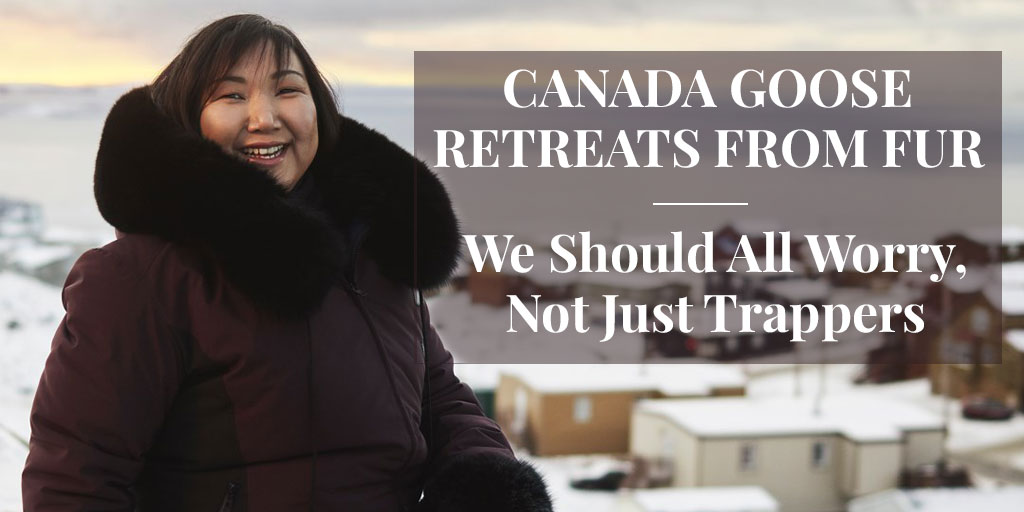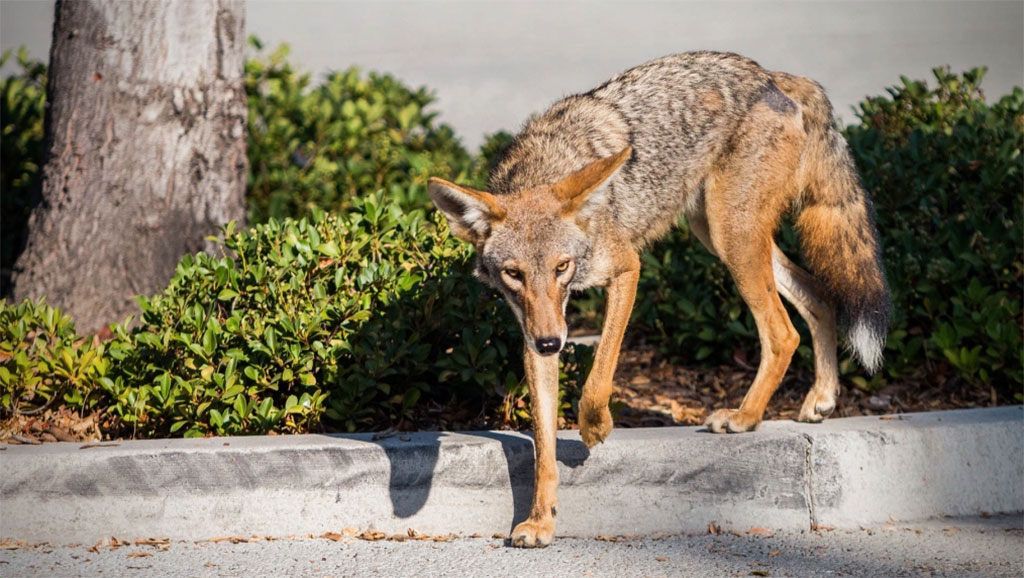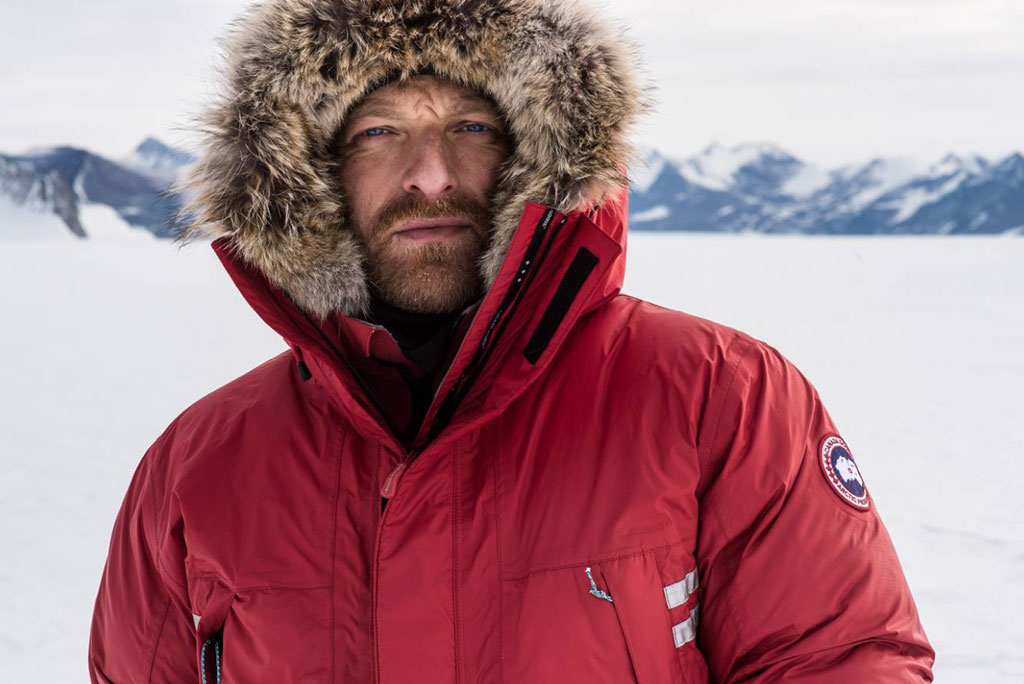
The recent news that Canada Goose would stop trimming the hoods of its performance parkas with coyote fur by the end of 2022 disappointed and angered many trappers and others in the fur trade. But anyone who cares about nature and democracy should be worried too. Here’s why.
First, despite the rhetoric of animal activists and the chatter of some media pundits, it’s clear that the company’s decision to retreat from fur was not driven by consumer trends or evolving societal values. Canada Goose has offered parkas with and without fur trim for years, but thousands of young people continue to choose the iconic coyote ruff – as you can see on the streets of Montreal, Toronto, New York, London, Paris, and other cities as soon as the thermometer dips each fall.
No clothing brand has ever been subjected to such aggressive campaign tactics.
The real reason for Canada Goose’s retreat from fur is clearly because the security, PR, and other costs of responding to relentless protests from animal activists simply became too much to bear. No clothing brand has ever been subjected to such aggressive campaign tactics. Store invasions, social media barrages, even noisy protests in front of CEO Dani Reiss’s home – Canada Goose held strong through it all for more than a decade. But the company’s extraordinary success in making fur cool for hip young consumers singled them out as a primary target for increasingly aggressive activist attacks.
While Dani Reiss always expressed pride about the northern roots of the company his grandfather founded, it no doubt became increasingly difficult to resist activist pressure once a majority share was sold to Bain Capital Private Equity, a US private investment firm, in 2013, and especially when Canada Goose was listed on the New York and Toronto stock exchanges, in 2017. The bean counters were now in control, and the financial and other costs of defending fur presumably became harder to justify as the company targeted new (warmer) markets, and expanded its product line with lightweight, all-season apparel and accessories.
Simply put, Canada Goose did not decide to stop trimming its parkas with coyote fur because consumers didn’t want to buy them. Canada Goose is dropping fur because it was subjected to the equivalent of a mafia protection racket. The activist message was: “Do as we say or we will destroy your business!” And, after years of intense (and costly) pressure, it worked. This should worry anyone who believes in freedom of choice, no matter what you think about fur.
MUST READ: Canada Goose: We’re Committed to Using Fur. Vice-President Gavin Thompson talks to Truth About Fur, 2020.
Undermining Conservation

Another reason why activist bullying tactics should worry the public is that they undermine responsible and successful wildlife conservation policies. As Ontario Fur Managers Federation general manager Robin Horwath explained in media interviews, “Coyote populations are at record levels; they will have to be managed to maintain a balance, whether we use the fur or not … but if activists succeed in destroying the market, it’s tax-payers who will foot the bill.”
LISTEN: Robin Horwath explains to 64 Toronto radio why coyotes will still need to be culled.
Coyotes are overpopulated across North America; they kill calves and lambs, and are now in our cities – from Los Angeles to Toronto – eating pet dogs and cats, and even attacking people, something rarely seen in the past.
Without a market incentive for trappers, the situation will only worsen. Instead of being valued as a natural resource, to be used responsibly and sustainably, coyotes will again be reduced to the status of “pests”. Governments will again be obliged to offer bounties, as several states and provinces did until not so many years ago. Coyotes will still be killed, but the fur will be wasted. So much for the ethical treatment of animals!
SEE ALSO: Will urban coyotes change the animal rights debate? Truth About Fur.
First Nations leaders are also expressing their concern for how Canada Goose’s decision will impact the markets for furs their communities rely on.
Unfortunate Statement

Caught in the middle between activist pressure and the trappers they have worked with for decades, it should be noted that the media statement issued by Canada Goose about its new policy carefully avoided any negative comment about fur. Fair enough. It is unfortunate, however, that it did include a statement from the CEO of Humane Canada, a coalition of SPCAs and other animal welfare groups, claiming that this was “a significant step forward toward building a more humane and sustainable world.”
The use of coyote and other furs in North America is, in fact, an excellent example of the responsible and sustainable use of nature. And there is nothing humane about leaving nature (i.e., starvation and disease) to manage coyote populations. The leadership at Canada Goose knows this. So why was this misleading and provocative Humane Canada statement included in its announcement? We can only guess that Canada Goose is working with Humane Canada to provide cover for its continued use of goose down, which is the core of its business.
In fact, responding to the decision by Canada Goose to drop fur, PETA announced “a moratorium” on protests against its stores, while pledging to work “behind the scenes” to end the company’s use of down. (Can you spell “Protection Racket”?)
SEE ALSO: 5 Reasons Why PETA Won’t Make Me Ditch My Canada Goose. By Alan Herscovici, Truth About Fur, 2016.
Vicious Circle
Meanwhile, hardly a week goes by when we don’t hear that another major brand or retailer is “going fur free”. It becomes a self-reinforcing cycle, because when Saks, Neimans, Holt Renfrew, and other retailers say they will stop selling fur, there is even less incentive for brands like Canada Goose to continue producing it. If allowed to continue, this vicious circle will also make it more difficult for politicians to resist calls to ban the retail sale of fur products entirely.
SEE ALSO: Progressive politicians should promote fur, not ban it. Truth About Fur.
So what should the fur trade be doing about this? Some people are writing to Canada Goose CEO Dani Reiss to express their concern. We should also be writing to and supporting the brands that continue to use fur, including Rudsak, Kanuk, Mackage, and others.
Most importantly, however, the fur trade must make a huge communications effort to regain control of our own story. We must explain to the public how fur is responsibly and sustainably produced in North America, and why fur is now, more than ever, an ethical choice. We must also sound the alarm about how activist bully tactics are eroding consumer choice, and threatening public health and safety by sabotaging responsible wildlife management. Must a child die from a rabid raccoon bite or being mauled by an urban coyote for the public to appreciate the role trappers play in controlling wildlife populations?
And we must make it personal: it’s time to put the real people of the fur trade – trappers, farmers, craftspeople – at the forefront of this campaign. These are the people whose livelihoods, cultures, and ethics are attacked by increasingly arrogant animal activists. Activist campaigns play on emotions — and in public debate, emotions trump logic — but we have feelings and values too. It’s time we were heard!
***
To learn more about donating to Truth About Fur, click here.










